 | Michigan. Department of Health - Public health - 1888 - 954 pages
...judgment. Besides being able to tell when and by whom were fought the battles of Issns and Arbela ; that the product of the sum and difference of two numbers is equal to the difference of their squares; that the verb, to be, has the same case after it which it has before it ; that the exports of Uruguay... | |
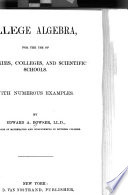 | Edward Albert Bowser - Algebra - 1888 - 868 pages
...twice their product. Also, if we multiply a + 6 by « — b we get (a + b)(a - 6) = «2 - b'1 (3) Thus the product of the sum and difference of two numbers is equal to the difference of their squares. Because the product of two negative factors is positive (Art. 36), it follows that the square of a... | |
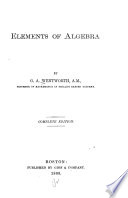 | George Albert Wentworth - Algebra - 1888 - 518 pages
...equal to the sum of their squares — twice their product. From (3) we have (a + b)(a - b) = a? - b3. That is, 76. The product of the sum and difference of two numbers is equal ¿o the difference of their squares. (I + a + aa+ ab ab+b2 ъ b (*) a — a — o»b b ab ab + b2 (3)... | |
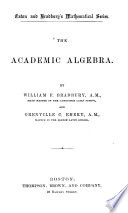 | William Frothingham Bradbury, Grenville C. Emery - Algebra - 1889 - 428 pages
...6xy + y2. 3. x - 3. 8. а3 - ¿3. 4.1 — x. 9. a; — abc. 5. z2 -y2. 10. 9x-2y. THEOREM III. 87. The product of the sum and difference of two numbers is equal to the difference of their squares. PKOOF. Let a and b represent any two numbers. Their sum will be a + b, and their difference a — b... | |
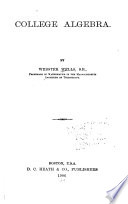 | Webster Wells - Algebra - 1890 - 604 pages
...first by the second, plus the square of the second. In the third case, (a + b)(ab)=a2-b2. (3) That is, the product of the sum and difference of two numbers is equal to the difference of their squares. Note. In the present chapter we shall, for the sake of brevity' use the expression "difference of two... | |
 | George Albert Wentworth - Algebra - 1891 - 536 pages
...their squares — twice their product. From (3) we have (a + ¿)(a — 5) = a* — bs. That is, 70! The product of the sum and difference of two numbers...expressed by symbols is called a formula. 78. By using tbe double sign i, read plus or minus, we may represent (1) and (2) by a single formula ; tbus, in... | |
 | William Frothingham Bradbury, Grenville C. Emery - Algebra - 1894 - 166 pages
...the following process : a + b a —b a? + ab -ab-b* ~* -6" From this we deduce the following THEOREM. The product of the sum and difference of two numbers is equal to the difference of their squares. According to this theorem multiply 1. x + y by x — y. 6. 2 a + b by 2 a — b. 2. x + 3 by x —... | |
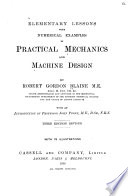 | Robert Gordon Blaine - Machine design - 1894 - 240 pages
...is greater by one than the number of ciphers following the decimal point. DIFFERENCE OF TWO SQUARES. The product of the sum and difference of two numbers is equal to the difference of their squares. This rule is especially convenient when the numbers differ only by a small amount. Thus — • 1512... | |
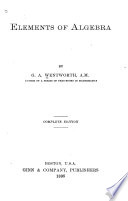 | George Albert Wentworth - Algebra - 1896 - 540 pages
...squares — twice their product. From (3) we have (a + ¿) (a — ¿) = a2 — ¿2. That is, 76. TAe product of the sum and difference of two numbers is equal to the difference of their squares. (1) a -|a -f «H • ¿ Й • ab ab-\-b * (2) a — a — a? — ab ab + b2 b b (3) a a a* + + ab... | |
 | George W. Evans - Algebra - 1899 - 456 pages
...other; that is, showing the equation to be identical. 108. Model A. — Prove the following theorem: The product of the sum and difference of two numbers is equal to the difference of their squares. * Proof. — Let a and b represent any two numbers, then the theorem is expressed by the following... | |
| |